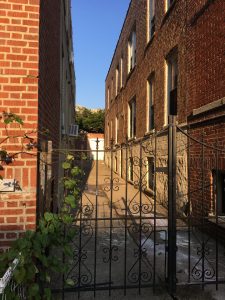 By Salmata Kaba
As we enter the ninth month of Covid-19 and transition to a cold-weather version of the “new normal” we are all trying to digest the advice that we are reading in order to stay healthy indoors.
Experts say increased ventilation and air filtration are key to maintaining indoor air quality and mitigating the spread of COVID-19 and other viruses. Even before the pandemic, proper ventilation was recognized by ASHRAE and other groups as a crucial element impacting inhabitant comfort and safety by helping rid homes of smoke, moisture and unwanted odors.
According to energy.gov, there are three types of residential ventilation strategies:
1) natural ventilation that brings in fresh outdoor air manually through windows or doors;
2) spot ventilation by localized exhaust fans (like those found in many kitchens and bathrooms);
3) whole-home ventilation systems that use fans and ducts to exhaust stale air and supply fresh air.
As COVID-19 research progresses, ventilation recommendations seem to change regularly. However, we do know how it is spread — largely through droplets in the air, in addition to some airborne transmission under certain conditions, and minimally through surface contact. Thus, wearing a mask, maintaining social distance, and increasing ventilation will all reduce the risk of COVID-19 infection in the immediate environment. Increased awareness of local case totals and infection rates will also help guide personal behavior. Keep informed by reading updated CDC and ASHRAE guidelines—see the links below.
By Salmata Kaba
As we enter the ninth month of Covid-19 and transition to a cold-weather version of the “new normal” we are all trying to digest the advice that we are reading in order to stay healthy indoors.
Experts say increased ventilation and air filtration are key to maintaining indoor air quality and mitigating the spread of COVID-19 and other viruses. Even before the pandemic, proper ventilation was recognized by ASHRAE and other groups as a crucial element impacting inhabitant comfort and safety by helping rid homes of smoke, moisture and unwanted odors.
According to energy.gov, there are three types of residential ventilation strategies:
1) natural ventilation that brings in fresh outdoor air manually through windows or doors;
2) spot ventilation by localized exhaust fans (like those found in many kitchens and bathrooms);
3) whole-home ventilation systems that use fans and ducts to exhaust stale air and supply fresh air.
As COVID-19 research progresses, ventilation recommendations seem to change regularly. However, we do know how it is spread — largely through droplets in the air, in addition to some airborne transmission under certain conditions, and minimally through surface contact. Thus, wearing a mask, maintaining social distance, and increasing ventilation will all reduce the risk of COVID-19 infection in the immediate environment. Increased awareness of local case totals and infection rates will also help guide personal behavior. Keep informed by reading updated CDC and ASHRAE guidelines—see the links below.
For specific guidance from engineers and ASHRAE on how to ensure our homes and apartments are properly ventilated, to best guard against Covid-19 in your home, please join the GHNYC monthly forum on Wednesday, November 18 from 6:30 – 8:00 PM. We will have an in-depth discussion and Q&A about ventilation guidelines with Amalia Cuadra from EN-POWER Group, ASHRAE board member Dustan L. Macauley from Setty, and Mina Agarabi, from AgarabiEngineering. You can register for the November 18 forum on Ventilation HERE. For more information on indoor air quality, you may watch the recording of the September forum on material impacts on the subject at the link here. In the meantime, here are links to some great sources of information: SOURCES: https://www.energyvanguard.com/blog/understanding-air-change-rates https://www.ashrae.org/file%20library/technical%20resources/covid-19/covid-19-guidance-for-multifamily-building-owners_managers.pdf https://taylorengineers.com/taylor-engineering-covid-19-whitepaper https://www.usatoday.com/in-depth/graphics/2020/10/18/improving-indoor-air-quality-prevent-covid-19/3566978001/ https://be-exchange.org/optimizing-hvac-health/
